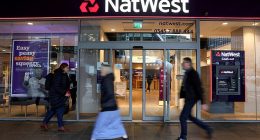If you’ve already made an eCommerce site, you’re probably looking at the sales report wondering why you’re not getting enough sales. Creating an eCommerce store and closing deals with vendors is one thing, but building on your eCommerce sales is another.
Well, if you’re looking for a way to improve your customer conversions for your eCommerce website, you’re at the right place. In this article, we’ll be exploring ways to improve customer acquisitions and converting website visitors to customers.
What is Conversion Rate Optimization?
Conversion Rate Optimization (CRO) is the process of enabling website visitors to take action when visiting your website. The aim here is to increase customer conversions with the help of making changes in some aspects of the website.
Many websites serve the purpose of pulling traffic to a specific brand’s products and services to increase the number of customers. Some sites also work as an affiliate to brands by playing the role of a third-party endorsing the products and services via reviews, unboxing, testing, etc. In this case, CRO is critical to gauge the success of the website.
Why is CRO important for Ecommerce Stores?
There’s a preconceived notion among eCommerce store owners that when your potential customer browses your website, that person is already looking for a particular product. Ideally, it should be easier to convert this visitor into a customer, shouldn’t it?
Unfortunately no.
There are many reasons a visitor finds a product she/he was looking for but still doesn’t end up buying from your website. You might notice the disappointed customer saying one of the following statements to other people.
- The website design was hard to navigate
- Checkout process took too long
- I had security concerns when prompted to enter my credit card information
- I couldn’t find a specific size/variation of the product
- The product image didn’t look like the original product
Going back to why CRO is essential for an eCommerce store – there just isn’t one answer to this question.
- Become more competitive
- Rising PPC (Pay Per Cost)
- Digital marketing becoming more expensive
- Social media’s becoming a game-changing platform for most businesses.
- Legitimize the authenticity of your business
- Save Money
- Immediate results in your website’s effectiveness and efficiency
When it comes to optimizing your eCommerce website for better CRO, there are many factors to consider. You could improve the overall UI/UX of the site for better navigation and more user intuitive features for potential customers.
Getting deeper into the UX, the product descriptions about the products available on your store can be more specific and give out the exact information your potential customers are looking for. You can also improve the overall payment method and incentivize trusted customers with discount coupons.
Let’s have a look into what all you can do to improve your eCommerce website.
Tips for Ecommerce Store Optimization
I’ve looked into some of the essential factors that can improve your eCommerce site’s CRO quickly. These tips are adaptations from some of the current and top-ranked eCommerce sites.
Write Impressive Copy
When it comes to creating a killer copy, there are a few nifty tactics that can improve your website in context to reducing bounce rate, improving UX, optimizing customer acquisition, and improving customer lifetime value (LTV).
You have to first improve your overall customer behavior journey by analyzing the conversion funnel and optimizing that. For instance, you can use the ‘above the fold’ approach so your website visitors can view all the information about your brands and deals right from the get-go.
The content copy you use to sell the products needs to be less ambiguous to make the purchasing decision easier for your potential customer. You can also integrate rich content such as infographics, images, and videos as not only does this make your eCommerce site rank better on Google, but it also gives your customers a realistic picture of the product.
You may notice a significant improvement in the flow of customers when you add an element of emotion to your content copy. Emotions only persuade a potential customer to make the purchase but also trigger their desire to have that product.
Use High-Quality Images on Product Pages

Adding product images not only makes your product page content-rich but also makes the product more convincing to purchase. The competition amongst eCommerce stores is soaring through the skies; hence, using high-quality images could just be the silver lining for your store.
Many eCommerce stores have features on their product page where customers can browse through an image gallery of these respective items. This gallery comprises a series of high-resolution pictures of a product with different angles to give the customer a realistic and detailed preview of the product.
As technology continues to make progress, some eCommerce stores like Shopify integrate augmented reality previews where a potential customer can see how the product would look in a particular setting using their smartphone. Other eCommerce owners thrive on user reviews, unboxing videos, and use case scenarios of products and services to push for better CRO.
Optimize Page Load Time

To optimize your eCommerce store, you can reduce the size of the assets of your website. These steps to optimize your webpage comprise minimizing the size of images, integrating AJAX, optimizing caches, and using social media button widgets.
That’s optimization at the front end (on the web app); however, you can also optimize your website by opting for a more suitable hosting solution. The location of the server and data centers significantly impact website page load times, as the closer the data center is to the audience, the better the website performance.
You can also improve the page load time of your ecommerce website by opting for an eCommerce web hosting that offers an optimized stack. This stack generally consists of a combination of servers and caches that come together to offer fast page load time to the visitors.
Effectively Place CTAs

The strategic placement of Call-to-Action (CTAs) such as ‘Add to Cart’; ‘Sign-up for FREE Trial’; and ‘Download Now’ play a vital role in improving your eCommerce store’s customer conversion rate. The content of your CTA also matters as that’s what creates an impact on your potential customer’s behavior.
You can use content copy such as ‘Try our Free Trial’; ‘Reserve Your Seat TODAY!’; or ‘Click to Download PDF’ are action words and make it easier for visitors to know what they need to do. Adding a contrasting color to the button is another great way to grab the viewer’s attention, as it would attract their eye and let them know where you want them to click.
The design sense behind a CTA has evolved over the last decade. CTA’s with large font size text, contrasting colors, and exciting shapes. work more effectively where the customer is seeking specific information. However, be sure not to mimic the CTA style of buttons on most click-bait websites as a potential customer may avoid clicking it altogether.
Perform A/B Test on Product Pages

To continuously improve your eCommerce site, you’ll want to add tweaks that focus on the most essential part of your business – the audience. You’ve developed an eCommerce site and want your customers to purchase products/services from your online store; hence it’s crucial to take their preferences into account and improve your eCommerce store.
When it comes to A/B testing, you’ll be running variants of two layouts of your eCommerce site (current and improved), which will cater to 50% of your audience. The version of the website that performs the best and has the best feedback is the one that you’ll be adding to your eCommerce site.
You can compare how two different types of content work on the basis of effectiveness on similar products. A/B testing also goes down to taxonomies of your eCommerce site to see which one works better for your customer conversion. Changing the navigation items on an eCommerce site is a prevalent practice across the board.
The positive outcome of A/B testing is through a continuous learning process. Hence, it’s long-term and won’t give you immediate results. That being said, this caters to your current customer base and is likely to retain them because it caters to their preferences.
A/B testing is the pathway where titan’s like Amazon paved through to success. CEO of Amazon Jeff Bezos has emphasized this during many of his interviews.
Make Checkout Process Convenient

When it comes to adding convenience to your eCommerce store, it’s advised for you to consider the preferences of mobile and tablet users too. People traveling on a bus, train, or taxi are most likely browsing the internet during their traveling time; hence it would make sense to cater to them as well.
You’ll notice a big jump in the sales on your eCommerce store when you make your eCommerce store more convenient for your target audience. Most eCommerce store owners lose out on half of the customer conversions because the checkout process isn’t optimized enough for their customers. Hence, the customer jumped out and abandoned the cart.
To make the checkout process more convenient, you should break down the check out process into different pages and then simplify the process wherever you can. For instance, instead of filling up the shipping details, many eCommerce stores provide customers with the option to fetch their data from their Google or Facebook profile.
There are a few principles to remember when designing the checkout pages.
- Keep out the clutter
- Focus on gathering data rather than making the sale
- Get data that can help with insights (Google Analytics)
Additionally, you can add a few tweaks to your webpages to cater to your target audience better. For instance, having a translated content version for specific regions (Spanish, Russian, German, Chinese) can widen your global customer base.
You can also cater to a diversified target audience by providing multiple payment methods to make payments manageable and more secure. Using NFC tagging such as Google PAY, or Apple Pay, and QR Code based payment gateways are becoming increasingly popular on eCommerce stores.
Last but not least, keep it simple. A customer filling in shipping information doesn’t want to find another obstacle to signing up and becoming a member. Any distraction can cost you a potential sale, so you’re going to have to be as meticulous and careful in your design as possible at this stage.
Use Live Chat for Conversion Rate Optimization for eCommerce Site

As an eCommerce store owner, connecting with your potential customers is crucial. This is the reason why many eCommerce store product pages have an automatic pop out a chat to help customers with something they are looking for.
Live chat caters to the potential customers immediately. Even if a sale is not guaranteed, these visitors are likely to come back to your website as they found it convenient to search for a particular product/service.
Live chatbots are often an integration that most eCommerce store owners consider, as hiring a team of chat agents can be very expensive. Adding a human element can prove to be very fruitful in areas such as support where potential customers have concerns or raise negativity.
Offer Coupon Codes

You’d want to give your potential customers an incentive to purchase or provide particular information. Otherwise, tasks such as filling up a form, survey, or subscribing to a newsletter can prove to be a tedious task.
Bloggers make deals with store owners and brands as it helps them in creating awareness about their products and services. Bloggers pull traffic to their website in an attempt to direct these visitors to their client’s sales funnel. Bloggers get earnings, sponsorships, commissions, and kickbacks for converting visitors into their client’s customer.
That’s how large-scale discounts like Black Friday, Cyber Monday, Christmas, New Year, Halloween have exceptional sales during these seasons.
Show Customer Reviews on Product Page

When a potential customer browses an online store, chances are that she/he will not be convinced about a product if only the vendor talks about how good it is. Thus, just like in a real shop – getting a second opinion on a product matters, customer reviews are just as crucial to potential customers in an eCommerce store.
You’ll find plenty of themes and plugins for integrating customer reviews. When it comes to reviews, you should monitor the negative and positive sentiments of your audience. If you’re getting too many negative reviews, don’t get too worked up as they offer an opportunity for discussions in public forums.
The critical aspect is to cater to every review and address reviewers with their concerns about the product, delivery, and the checkout process. If you respond in time, your audience is likely to revisit your eCommerce store as they take you seriously.
eCommerce Conversion Rate Optimization with Retargeting Campaigns

You can improve the user experience of your eCommerce website with the help of cookies to retarget campaigns. You’ll see a common occurrence on most websites as a prompt that notifies the visitor that the website uses cookies. It’s through this method that these visitors see ads on multiple mediums such as social media and Google search.
The next time your eCommerce site visitor runs a search query on Google, they will see relevant ads of products that can cater to their intent. Hence, if the product fits the search intent, there’s a high chance of them converting into a customer through that ad.
eBay, Ali Express, Amazon and other popular marketplaces’ ads are examples of these kinds of retargeting campaigns. You’ll see these ads on your social media timelines and blogs when the sales seasons begin.
Write Blogs About Your Products

Having a blog for your eCommerce store will help you rank and stay popular amongst your target audience. A blog helps in building awareness, improving SEO, retaining the audience on your website, thereby improving sales, and improving the overall customer lifetime value.
When it comes to building a blog, you can pick a direction you want to take. For instance, you can write case studies of customers who have purchased and benefitted from a product from your store. Hence, building a case study around a particular customer can also give you the opportunity of building relationships and having brand ambassadors to help you maintain your reputation.
Your blog can also take the direction of demonstrating how particular products/services operate. For example, writing a blog about smartphone review/unboxing, or installing a filtration pump inside a swimming pool can help potential customers understand whether the product solves their problem or not. This way, you’re preventing negative backlash if a product does not fulfill the requirement of the user.
The third direction of your blog could be about the improvements and feature upgrades of your eCommerce store. You can also use this to make announcements about seasonal sale offers, new membership plans, and onboarding of new vendors on your eCommerce. This helps in raising awareness about a new range of products that are now available to your audience.
On the whole, the blog will help you in building a particular voice and communicating with the world. This also opens up the opportunity for you to build relationships and co-market activities to improve sales and, ultimately the bottom line.
Closing Thoughts
You now know a few methods of improving the conversion rate optimization of your eCommerce site. We’ve covered aspects of the content copy, design aesthetics, user experience, checkout process, marketing through retargeting campaigns, and blogging.
These are all conversion rate optimization techniques that can help improve the sales and profitability of your eCommerce store.








